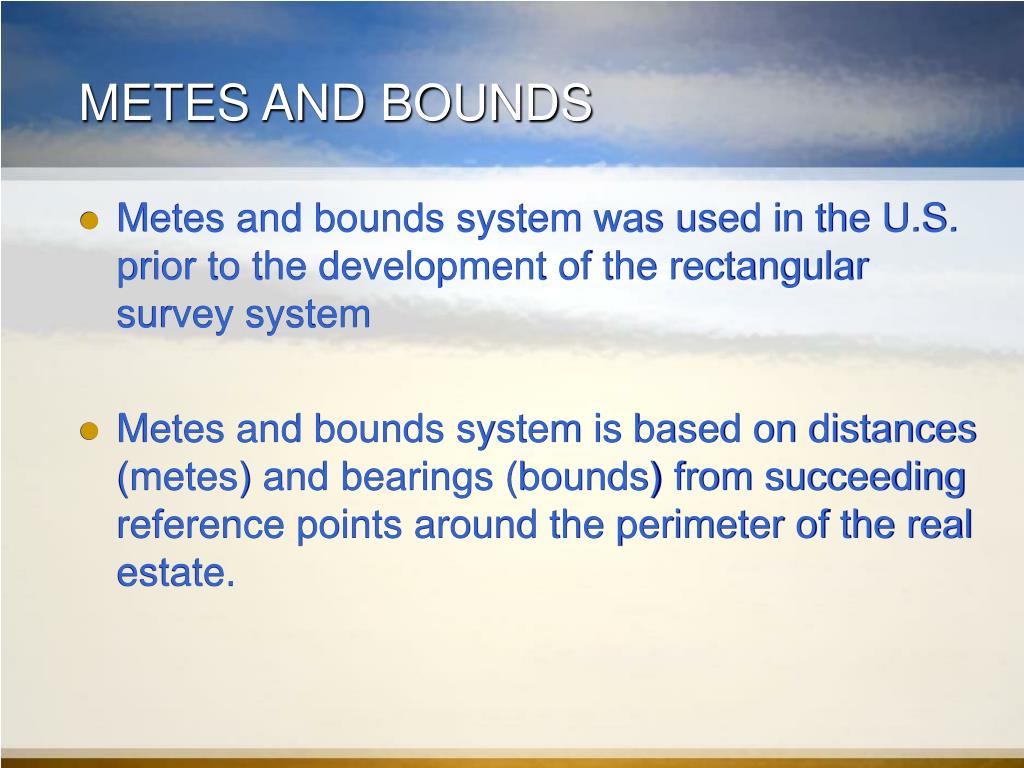

The third principal meridian is located entirely within Illinois. Previous to the Public Land Survey System, land was surveyed using a confusing landmark-based system called metes and bounds. There are over thirty principal meridians in the United States and they do not always extend from one state into another.

Others are named for territorial features for example, the Indian Meridian in Oklahoma and the Salt Lake Meridian in Utah. Some, such as the Michigan and Louisiana Meridians, are named for the state in which they are located. Not all principal meridians are numbered. Its reading is 86 degrees, 28 minutes, and 0 seconds west. For example, you would say it is in township 3 north, range 5 east to identify a property. All township locations are defined by referencing how from they are from the principal meridian and baseline. 70 W (range 70 west) of the 6th PM (the sixth principal meridian, a northsouth reference line) in Boulder County, Colorado, bears N 45 W 1,320 feet, at which. The s econd principal meridian - used in descriptions of some land in Illinois - is located in Indiana. Range lines run parallel to the principal meridian and determine how far east and west the township is of that meridian. The longitudinal reading of this line is 90 degrees, 28 minutes, and 45 seconds west. It begins at a point near Beardstown and is along a line straight north from the mouth of the Illinois River near Grafton. The f ourth principal meridian was established for surveying lands located between the Illinois and Mississippi Rivers. Greenwich is the starting point for all longitudinal measurements since longitude 0 degrees passes through it.

Its exact location is 89 degrees, 10 minutes, and 30 seconds west of Greenwich, England. It was established as a line running true north from the point of confluence of the Ohio and Mississippi Rivers. In Illinois, for example, the t hird principal meridian - which roughly cuts it in two - is located about 9 miles west of the 89th geographic meridian.


 0 kommentar(er)
0 kommentar(er)
